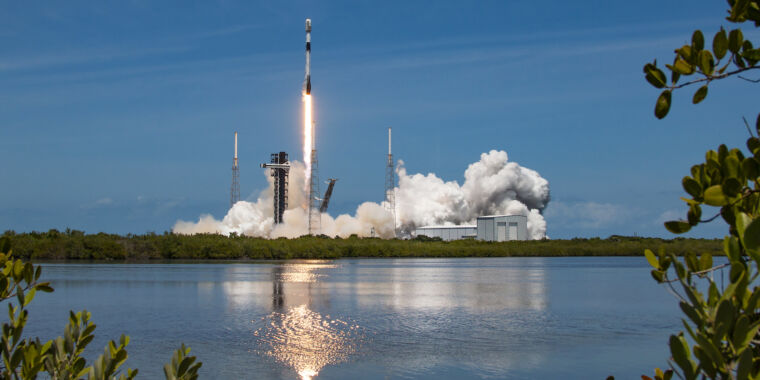SpaceX
Falcon 9 rocket The upper stage failed during the flight.This prevented the rocket from putting the 20 Starlink satellites into the proper orbit: the satellites were released at a lower altitude than expected (about 135 km above the Earth’s surface) and encountered atmospheric resistance, which ultimately caused them to burn up as they re-entered the Earth’s atmosphere.
Typically after a launch failure, a rocket is grounded for several months while engineers and technicians sift through available data and debris to determine the cause, conduct tests, and implement fixes.
But multiple sources said SpaceX was ready to launch its Falcon 9 rocket as early as last weekend, and now the company could launch for the Starlink 10-4 mission as soon as 12:14 a.m. ET (4:14 a.m. UTC) on Wednesday.
Quick solution?
Summary of anomalous phenomena Posted immediately afterSpaceX said an “anomaly occurred in the Merlin vacuum engine that prevented it from completing the second burn,” but did not disclose the cause of the malfunction.
The company has not publicly provided any additional information since then, but its engineers identified the cause of the failure almost immediately, and sources say the repair was simple.
SpaceX was so confident in its decision that it resumed launches of its Falcon 9 rocket a week after the failure, but it cannot do so while the Federal Aviation Administration investigates the accident.
So a week ago, on July 15, SpaceX asked the FAA to resume launches of its Falcon 9 rockets while the investigation into the anomaly continues, saying: “The FAA is reviewing the request and will act based on data and safety at every stage of the process.” The F.A.A. in a statement at the time.
Manned missions on deck
So for now, SpaceX is waiting for a decision from the FAA on whether it can resume Falcon 9 launches less than two weeks after the malfunction occurred.
The company plans to launch at least three Starlink missions in succession from two pads in Florida and one in California to determine the effectiveness of the fixes. The company wants to demonstrate the reliability of the Falcon 9 rocket, which has logged more than 300 successful missions since its last failure in a launch pad accident in September 2016, before two upcoming crewed missions.
There’s still a slim chance that the Polaris Dawn mission, led by commercial astronaut Jared Isaacman, could launch in early August, followed by NASA’s Crew 9 mission, which would carry four astronauts to the International Space Station.
Notably, none of these crewed missions will require a second burn of the Merlin engines, which caused a failure during a Starlink mission earlier this month.


